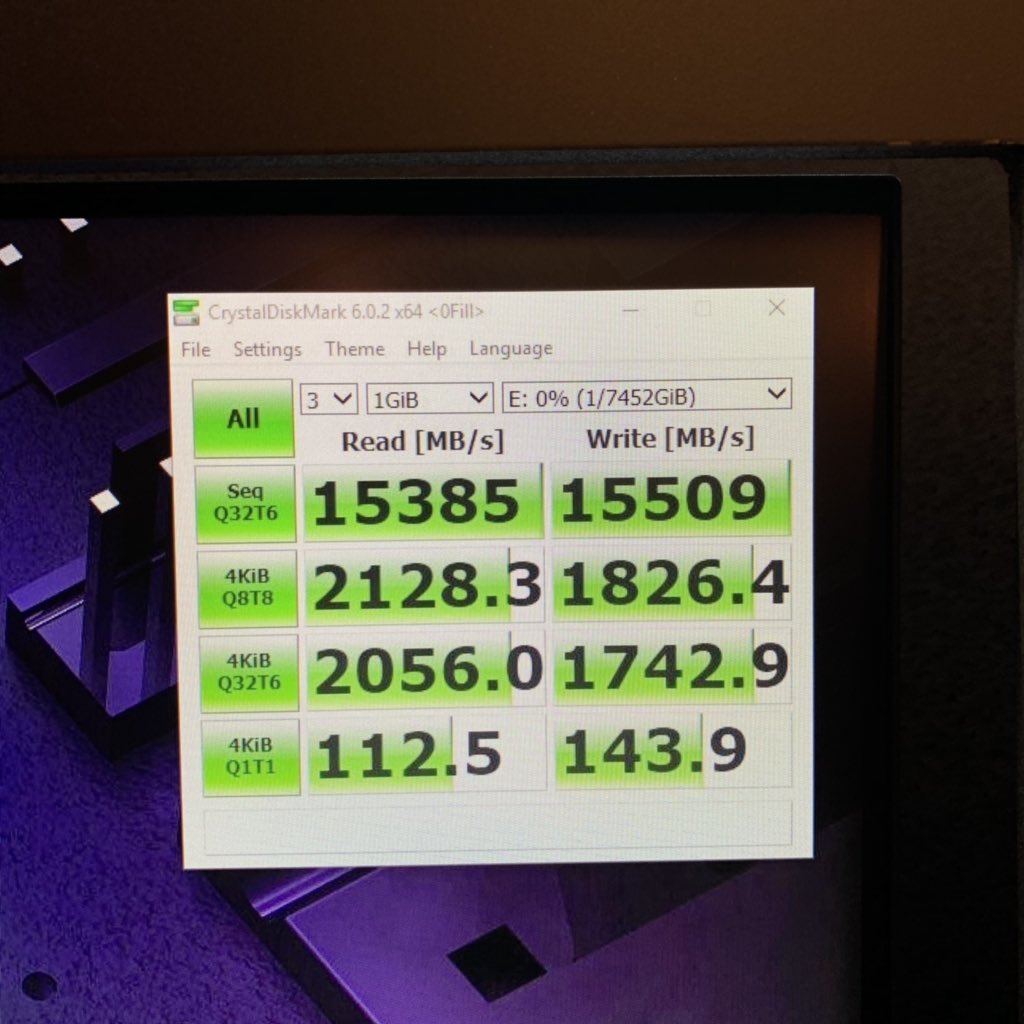- Padavan firmware
- Milyen program, ami...?
- Telekom otthoni szolgáltatások (TV, internet, telefon)
- Kínai cégek segítik ezentúl a Teslát, a Renault-t, a Hyundait és a Toyotát
- Hálózati / IP kamera
- Az iPadOS-re írt appokra is díjat vet ki az Apple
- Kaspersky Antivirus és Internet Security Fórum
- Crypto Trade
- Kodi és kiegészítői magyar nyelvű online tartalmakhoz (Linux, Windows)
- Vodafone otthoni szolgáltatások (TV, internet, telefon)
Új hozzászólás Aktív témák
-

awexco
őstag
válasz
 Petykemano
#1230
üzenetére
Petykemano
#1230
üzenetére
Alapvetően simán lehetne Amd cuccokból a meglevő technikák felhasználása mellett nagyon spéci render boxokat . Kellő optimalizálással hasítanának . A kliensek mint workstation-ok meg szépen hozzájuk csatlakoznának . Ha nincs épp renderelés akkor meg a tervezési fázist gyorsítanák .
Lehet lenne benne fantázia . De ingyen senki sem mozdul meg .Az is lehet , hogy hülyeség , fene tudja .

[ Szerkesztve ]
I5-6600K + rx5700xt + LG 24GM77
-

Petykemano
veterán
-

S_x96x_S
őstag
válasz
 Petykemano
#1230
üzenetére
Petykemano
#1230
üzenetére
>Esetleg ott lehetne ilyesminek szerepe, hogy
>a CPU és a GPU is egyaránt tudja használni a memory extender eszközt saját céljaira (HBCC)érdekes lehet még az 1 évvel ezelőtti "Near memory"-s pletyka.
"AMD is working on what they call “Near Memory,” or HBM being used in conjunction with future CPU components. We’re not clear presently on whether that includes desktop CPUs, but we do know that HBM for CPUs is in active R&D, and given Hades Canyon, that’s not necessarily a big surprise."
( via GamerNexus - April 17, 2018 )persze ebbe bármit bele lehet vizionálni, Az is lehet, hogy ez ugyanaz mint az a HBM-es L4 cache spekuláció - az I/O die-on. De ha ennek az InfinityF - hoz is köze van, akkor ez egy korrekt CPU +GPU közös memória ( vagy annak alapja is lehet ) HPC környezetben ideális.
más:
Az Intel és a Micron szétváltak - ( 3D XPoint ) - és valószínűleg a Micron-nak is lesz(van=Micron’s QuantX ) saját terméke - amit talán a nyílt szabványokhoz igazit. persze a mostani DDR4 árak miatt nem életképes.
Where is Micron’s QuantX? ( January 21, 2019 )
https://thememoryguy.com/where-is-microns-quantx/- "It is now 3½ years later, and this product still seems to be having trouble reaching cost parity with DRAM."
- "Why, then, is Intel producing a money-losing product? 3D XPoint is a necessary part of Intel’s platform strategy. Without the support of Optane DIMMs Intel’s most costly new Xeon server CPUs won’t perform any better than the company’s cheaper/older CPUs – systems without Optane will bog down the processor’s performance
...
Intel may lose $10/system for the Optane it sells, but that will enable it to sell a $50 more expensive CPU (these are completely fictitious numbers). While this is good business, it means that only Intel can make money by selling 3D XPoint at a loss. Micron will need to wait until XPoint’s cost drops below DRAM costs to make money selling Quantx.As a result, readers shouldn’t expect to see Micron promote QuantX until 3D XPoint’s cost falls below that of DRAM. And with a DRAM price collapse already started, this could be a very long time.
There’s no wonder that Micron has been so quiet about QuantX. Its manufacturing cost isn’t yet low enough to make sense.
It also makes sense that Samsung’s response to Optane is to make a fast NAND flash – Z-NAND. The company can do this by customizing the circuitry inside of standard NAND flash chips, and these changes don’t require any new technology. Z-NAND will be built using Samsung’s existing NAND process but with a different chip layout (i.e. lots of planes & sense amplifiers). They are betting that they don’t need to debug a new memory technology to participate in the new memory layer.
Other companies hope to compete against 3D XPoint with various alternative technologies (i.e. ReRAM, MRAM, etc.) Any company that embarks on this path will need to simply eat the loss for 2+ years without any hope of ever recovering it. It’s hard to imagine that anyone will really do this.
"[ Szerkesztve ]
Mottó: "A verseny jó!"
Új hozzászólás Aktív témák
- EDIFIER R1700BTS hangfal pár makulátlan, új állapotban, 2 év hivatalos garanciával, alkalmi áron
- LG OLED55B23LA 2 Év GYÁRI GARANCIA
- Apple iPhone XR 128GB, Kártyafüggetlen, 1 Év Garanciával
- Gamer PC , i7 12700KF , RTX 3080 Ti , 64GB DDR5 , 960GB NVME , 1TB HDD
- Intel PC , i5 8500 , 1660 6GB , 32GB DDR4 , 512GB NVME , 500GB HDD
Állásajánlatok
Cég: Ozeki Kft.
Város: Debrecen
Cég: Promenade Publishing House Kft.
Város: Budapest







